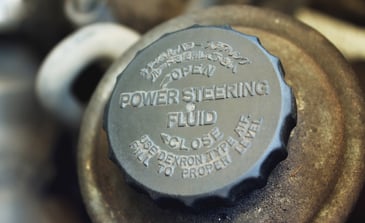HPS Hose Failure Symptoms and Maintenance
 The power steering hose is a critical piece of the hydraulic power steering (HPS) system puzzle. Not only does it connect the steering pump to the cylinders, allowing for easier turning, but it transfers the pressurized steering fluid into the rack and plays a role in proper system lubrication and cooling. But what happens when an HPS hose fails? And how do you know when to replace it? In this post, we'll discuss HPS hose failure symptoms and maintenance best practices to keep your shop on the right track with every HPS rebuild.
The power steering hose is a critical piece of the hydraulic power steering (HPS) system puzzle. Not only does it connect the steering pump to the cylinders, allowing for easier turning, but it transfers the pressurized steering fluid into the rack and plays a role in proper system lubrication and cooling. But what happens when an HPS hose fails? And how do you know when to replace it? In this post, we'll discuss HPS hose failure symptoms and maintenance best practices to keep your shop on the right track with every HPS rebuild.
Common HPS Hose Failure Symptoms
As with any automotive system or part, there is a wide range of reasons why a steering hose might fail in an HPS application. While general steering failure might be relatively simply to diagnose, pinpointing the source of the issue might be another story entirely. While every repair will come with its own challenges, here are some symptoms that can point to HPS hose failure:
- Steering difficulty: Increased steering effort from the driver may be the result of a hose failure.
- Leaking/low fluid: A loss of steering fluid can totally shut down the HPS system. Leaks can be caused by cracks in rubber hose, broken connectors, or other weak spots in the system. Many drivers also report a feeling that the power steering capabilities seem to cut in and out, which may be the result of a slow fluid leak. You'll probably notice a puddle of fluid on the ground under the vehicle at some point, if this is the case.
- Whining noise: While unusual noises can accompany many different mechanical issues, a steering hose issue will usually create some sort of noticeable whining sound during steering due to a loss of fluid.
 Remember, when you're diagnosing an HPS failure, it's important to consider all factors, from issues with the part itself to the behavior of the driver and beyond. In the case of HPS, it's important to remember that, in contrast with EPS systems, every part is mechanical and subjected to high levels of wear and pressure. It's likely that any HPS hose will eventually fail for one reason or another. Some common causes of HPS failure symptoms include:
Remember, when you're diagnosing an HPS failure, it's important to consider all factors, from issues with the part itself to the behavior of the driver and beyond. In the case of HPS, it's important to remember that, in contrast with EPS systems, every part is mechanical and subjected to high levels of wear and pressure. It's likely that any HPS hose will eventually fail for one reason or another. Some common causes of HPS failure symptoms include:
- General pressure and wear that causes leaks, bulges, and other hose irregularities
- Collateral damage from other steering part failures
- Contamination of the HPS system with outside debris
- Improper lubrication or cooling
In order to identify the true cause of any steering failure, techs must be thorough in their inspection and diagnosis. They must also listen carefully to the input of the driver. Once your team determines that the HPS hose has failed, you have some important service decisions to make moving forward.
HPS Hose Maintenance Best Practices
 One you've landed on a steering hose failure diagnosis, how should you proceed? Here's one important reminder that should guide your decision: the steering hose is in use any time the engine is running. The HPS hose is considered a wear part due to its rubber material and the amount of pressure and general wear it's subjected to any time the vehicle is on. While there is no specific lifetime on HPS hoses, it's common practice to replace them even in the early stages of failure. In fact, OE manufacturers generally recommend replacing the steering hose every time a rack or pump is replaced.
One you've landed on a steering hose failure diagnosis, how should you proceed? Here's one important reminder that should guide your decision: the steering hose is in use any time the engine is running. The HPS hose is considered a wear part due to its rubber material and the amount of pressure and general wear it's subjected to any time the vehicle is on. While there is no specific lifetime on HPS hoses, it's common practice to replace them even in the early stages of failure. In fact, OE manufacturers generally recommend replacing the steering hose every time a rack or pump is replaced.
Depending on the exact damage situation you're dealing with, replacing the steering hose can be a mostly uncomplicated repair. Techs should disconnect the old hose, drain the fluid, replace the seals and fittings, and attach the new hose. While changing the HPS hose may seem unnecessary when replacing other hard parts, servicing the entire system is considered the best practice for ensuring the success of the steering system. Replacing the HPS hose should be considered a required part of any complete HPS rebuild you take on.


